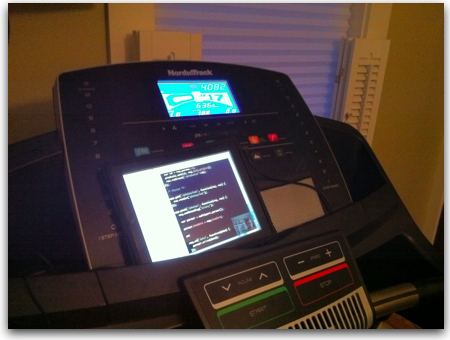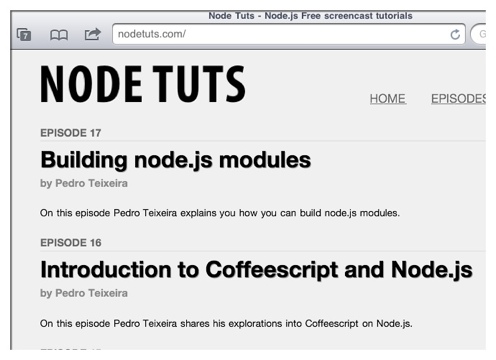What I didn’t say in my last post about the NodeTuts video tutorials was how I have been watching the episodes. Yes, indeed, I’ve been watching them while running or walking on our treadmil… this morning I ran 4 miles and went through two of the Node Tuts episodes (11 and 12):

As you can see, I just place the iPad in the tray of the treadmill[1] and then have a 1/8″ audio cable going from the iPad audio output to the audio jack on the treadmill which then sends the audio out the treadmill’s speakers. It’s an okay setup, although the iPad screen is off-center and down a bit. You don’t see it in a picture, but we have a 27″ flat panel TV to the left of the treadmill. I may at some point get the VGA connector for my iPad which would let me then output the video to that TV and gain the use of its speakers as well as the larger screen. But so far it’s working well.
Fun, fun, fun…
[1] The treadmill is a new NordicTrack c900 for those wondering.

 In my continued interest to learn more about Node.js, I was recently pointed to an enjoyable set of video podcasts called “Node Tuts” and available at:
In my continued interest to learn more about Node.js, I was recently pointed to an enjoyable set of video podcasts called “Node Tuts” and available at: It’s funny… I’ve been writing small python programs for 10 or 15 years now (
It’s funny… I’ve been writing small python programs for 10 or 15 years now (